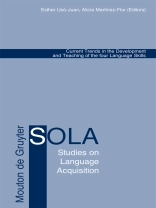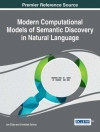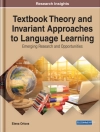Current Trends in the Development and Teaching of the four Language Skills builds connections from theory in the four language skills to instructional practices. It comprises twenty-one chapters that are grouped in five sections. The first section includes an introductory chapter which presents a communicative competence framework developed by the editors in order to highlight the key role the four skills play in language learning and teaching. The next four sections each represent a language skill: Section II is devoted to listening, Section III to speaking, Section IV to reading and Section V to writing. In order to provide an extensive treatment of each of the four skills, each section starts with a theoretical chapter which briefly illustrates advances in the understanding of how each skill is likely to be learned and taught, followed by four didactically oriented chapters authored by leading international specialists. These pedagogical chapters deal specifically with four key topics: 1) areas of research that influence the teaching of a particular skill; 2) an overview of strategies or techniques necessary for developing a particular skill; 3) an approach to the academic orientation of a particular skill, and 4) unique aspects of teaching each skill. Moreover, all chapters incorporate two common sections: pre-reading questions at the beginning of the chapter in order to stimulate readers’ interest in its content, and a section entitled suggested activities at the end of the chapter in order to allow readers put the ideas and concepts presented into practice. The accessible style and practical focus of the volume make it an ideal tool for teachers, teacher trainers, and teacher trainees who are involved in teaching the four language skills in a second or foreign language context.
Daftar Isi
Preface;
Section I
Theoretical perspectives on language learning and teaching
Esther Usó-Juan, Alicia Martínez-Flor
Approaches to language learning and teaching: Towards acquiring communicative competence through the four skills
Section II
Listening
Alicia Martínez-Flor, Esther Usó-Juan
Towards acquiring communicative competence through listening
Michael Rost
Areas of research that influence L2 listening instruction
David J. Mendelsohn
Learning how to listen using learning strategies 79
Tony Lynch
Academic listening: Marrying top and bottom
Goodith White
Teaching listening: Time for a change in methodology
Section III
Speaking
Alicia Martínez-Flor, Esther Usó-Juan, Eva Alcón Soler
Towards acquiring communicative competence through speaking
Martin Bygate
Areas of research that influence L2 speaking instruction
Christiane Dalton-Puffer
Questions as strategies to encourage speaking in content-and-language-integrated classrooms
Rebecca Hughes
Turn-taking awareness: Benefits for teaching speaking skills in academic and other contexts
Anne Burns
Teaching speaking: A text-based syllabus approach
Section IV
Reading
Esther Usó-Juan, Alicia Martínez-Flor
Towards acquiring communicative competence through reading
William Grabe
Areas of research that influence L2 reading instruction
Anne M. Ediger
Developing strategic L2 readers… by reading for authentic purposes
Mary Lee Field
Finding a path to fluent academic and workplace reading
Eddie Williams
Teaching reading: Individual and social perspectives
Section V
Writing
Esther Usó-Juan, Alicia Martínez-Flor, Juan Carlos Palmer Silveira
Towards acquiring communicative competence through writing
Ann M. Johns
Areas of research that influence L2 writing instruction
Barbara Kroll
Techniques for shaping writing course curricula: Strategies
in designing assignments
Christopher Tribble
Written in, written out: Who sets the standards for
academic writing?
Alister Cumming
Teaching writing: Orienting activities to students’ goals
List of Contributors
Tentang Penulis
Alicia Martínez-Flor, Universitat Jaume I, Castellón, Spain; Esther Usó-Juan, Universitat Jaume I, Castellón, Spain.












